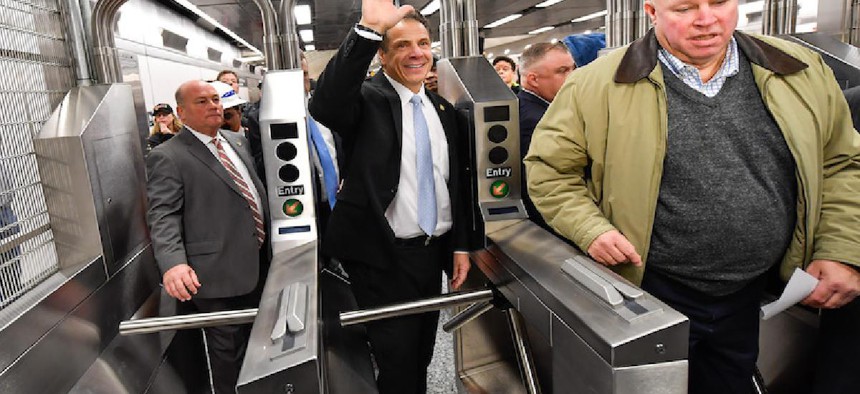This week, Metropolitan Transportation Authority Chairman Joe Lhota unveiled a “how to fix the subways” strategy that is sound enough, but is mostly made of measures the MTA should have taken months ago – and, indeed, started to take before Lhota even arrived on the scene.
And despite Lhota’s professed commitment to turning things around, the MTA continues to confront bad news, as its board committee meeting Monday revealed.
First, subway delays continued to worsen before Lhota arrived. In May, only 61.7 percent of weekday trains ran on time, down from 68.8 percent last May. That’s a big 7.1 percentage-point decline.
Second, the MTA continues to experience a different sort of delay: difficulty starting and finishing capital projects.
RELATED: As trains break down, lawmakers are yet to arrive at fixes
The MTA’s major problems right now stem from old signals and poor maintenance. The $600 million project to modernize the signals on the No. 7 line, now a decade into planning and construction, is supposed to be finished later this year.
But meeting that deadline will be “challenging,” project officials said Monday, because of software glitches and a failure to teach drivers how to operate the new equipment.
And New York City Transit’s core maintenance and replacement program, including track and switch projects, is also behind. The agency was supposed to finish $950 million worth of work through May. Instead, it only finished $211.7 million, or 22 percent of the goal. New York City Transit was also behind on “substantial completions,” spending only $433 million of its allocated $834 million.
The plan Lhota announced deals with the first sort of problems: reducing delays by increasing inspections, getting crews to broken equipment more quickly, sealing leaks, removing trash from tracks faster and keeping medical professionals at busy stations to deal with sick passengers. This is basic stuff.
Lhota hasn’t yet addressed the other, much trickier, problem: how to do major construction work more quickly. He said he will do so soon.
Yet the MTA - taking its cues from Gov. Cuomo - doesn’t want to do this hard work first. The authority wants to jump ahead to something easy: asking for more money, particularly from Mayor Bill de Blasio and New York City taxpayers.
Gov. Cuomo says the city is not doing its fair share. So the MTA wants the city and state to split the cost of Lhota’s $836 million short-term plan. The money will go toward hiring 2,700 more workers as well as accelerating construction work.
Just one problem: the MTA doesn’t need more money right now. Its tax take has more than doubled in the last decade, to $5.5 billion annually, even as inflation has increased prices by only about 28 percent. That’s partly because the state Legislature enacted a $1.7 billion payroll tax in 2009, but the MTA also benefits from economic growth, as I noted in a new report.
RELATED: This city needs Fair Fares now more than ever
As de Blasio correctly noted this week, city taxpayers already pay the bulk of these taxes, which range from a sales tax to a business-income tax. (Other downstaters pay the rest.)
Together with fares, tolls and other revenues, the MTA will take in $15.6 billion this year - an enormous amount of money - compared to $7.8 billion 12 years ago. The city is more than providing its fair share. This money should be enough for the MTA to accomplish its core task of running subways on time.
Yes, it would be prudent for the city to set aside a chunk of its record budget surplus for long-term transit investment beyond the $2.5 billion it has already promised between 2015 and 2019. It may need that money to invest in subways after 2019, if New York has a recession.
But unlike people waiting for delayed trains, the city should not be in a hurry. The MTA hasn’t proven that it can spend new money wisely – or even unwisely and quickly.
Nicole Gelinas is a contributing editor to the Manhattan Institute’s City Journal. Follow her on Twitter @nicolegelinas.


